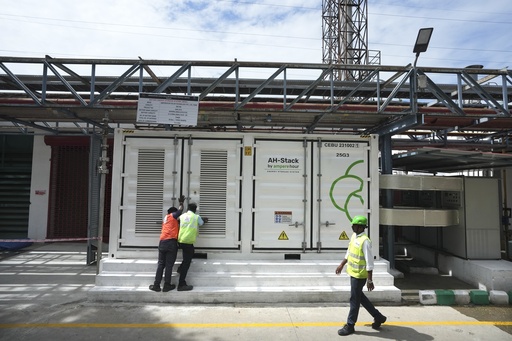2024 has proven to be a significant year for a cleaner energy source that contributes positively to both public health and the fight against climate change — large battery systems.
This capability to store substantial quantities of electricity in batteries was almost non-existent a decade ago. By the end of November, the nation boasted around 24 gigawatt-hours of storage capacity, marking an impressive 71% increase compared to the same period in 2023.
This surge in battery storage is welcomed by advocates for clean energy, including Dariella Rodriguez. Working in the South Bronx, New York, she has witnessed the consequences when demand for heating or cooling rises sharply, prompting the activation of natural gas-powered plants nearby in Port Morris and Mott Haven.
Instead of relying on these pollution-heavy “peaker” plants to fulfill energy demands, batteries could swiftly respond, providing electricity to the grid. Although Rodriguez has yet to see this transition, she remains hopeful.
“The communities living near these plants are often the most vulnerable,” Rodriguez stated, highlighting the precarious position of lower-income individuals and communities of color who are disproportionately situated next to these peaker facilities.
According to the U.S. Government Accountability Office, there are approximately 1,000 peaker plants in the United States, which are known to be more detrimental to the environment, inefficient, and costly. An estimated 63 million people live within three miles of one of these plants.
Even though peaker plants operate infrequently, they produce a larger amount of nitrogen oxides and sulfur dioxide per energy unit, both of which are linked to respiratory issues like asthma. Additionally, these facilities emit more greenhouse gases compared to other types of power plants on a per-energy basis.
Batteries are considered a clear solution to lessen reliance on these peaker plants, according to Daniel Chu, a senior energy planner for the New York City Environmental Justice Alliance. Using battery storage allows for extended utilization of clean energy beyond just sunny or windy times.
“Energy storage allows us to utilize that generation when it’s needed the most,” remarked Tim Fox, managing director at ClearView Energy Partners, a research firm.
Currently, more than half of the battery storage systems in the United States are either integrated with or support solar projects, as reported by an analysis of data from the Energy Information Administration. The growth of solar energy has been robust this year, surpassing the 100-gigawatt milestone.
The integration of battery storage is becoming increasingly crucial due to the growing unpredictability in forecasting energy needs.
“As weather patterns evolve, traditional methods for predicting grid capacity for extreme events are becoming less effective,” said Oliver Garnett, director of energy services at Fermata Energy.
Furthermore, global electricity demands are anticipated to increase significantly — by approximately one-third to three-quarters by 2050, as per the Energy Information Administration. Factors such as the rise of artificial intelligence data centers, the transition of transportation to electric power, and increased population are all driving this demand.
“Utilities constantly ask, ‘Do we have enough power plants?’” noted Mike Jacobs, a senior energy analyst with the Union of Concerned Scientists. “The advantage of batteries is that if they’re charged, they can meet unexpected needs.”
If utilities are compelled to seek new energy generation, they might continue to invest in gas or coal plants, which contribute to about 25% of the country’s greenhouse gas emissions, rather than phasing them out.
California emerged as a leader in battery deployment this year, with over 11 gigawatt-hours of capacity, equivalent to the electricity output of a nuclear power facility over the course of 11 hours before needing recharging. Texas followed with 6 gigawatt-hours, while Arizona and Nevada contributed nearly 2 gigawatt-hours and 1.1 gigawatt-hours, respectively.
Despite these advancements, many states lag in adopting battery technology. As of November, 86% of national large-scale battery storage is contained within just four states.
Some areas have yet to implement policies compelling utilities to develop or acquire their own energy storage solutions. Currently, only 18 states operate 50 megawatt-hours or more.
Furthermore, specific states may lack the clean energy sources necessary for pairing with batteries, or they may express concerns about the reliability of storage in crisis situations. Challenges in connecting storage systems to the grid also persist, yet experts foresee a growing momentum.
In particularly, California and Texas are demonstrating that investments in this technology are yielding positive outcomes. “News of this success is spreading across the nation,” remarked John Hensley, a senior vice president at American Clean Power. “There is an increasing adoption of battery technology across various regions.”




